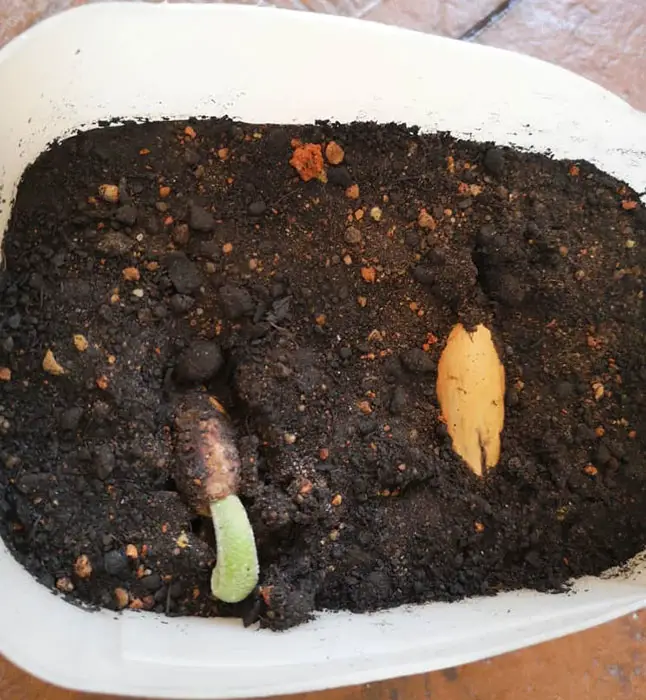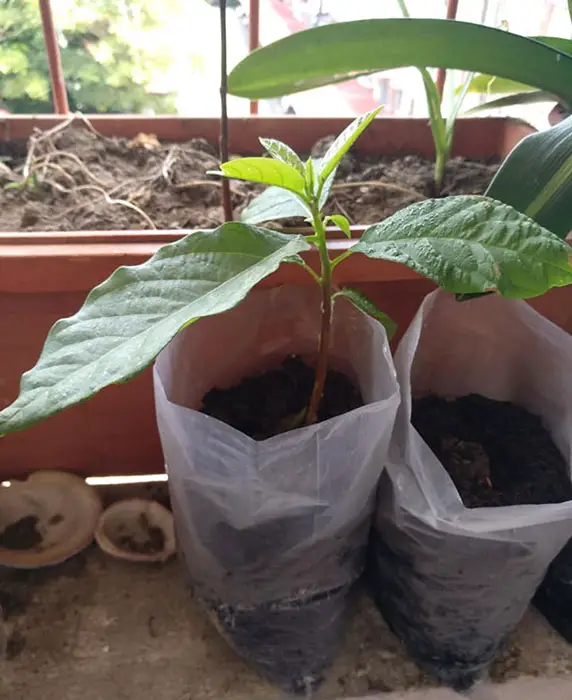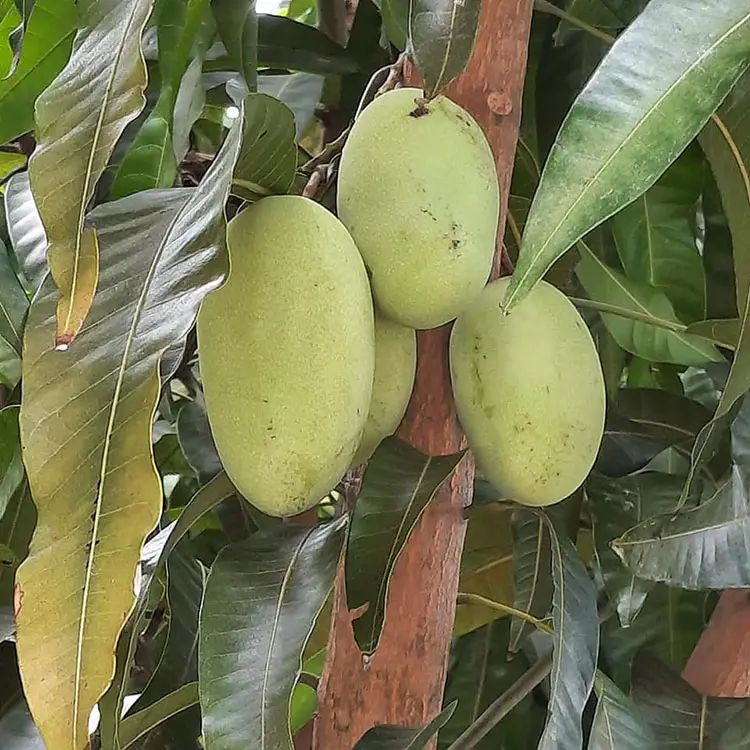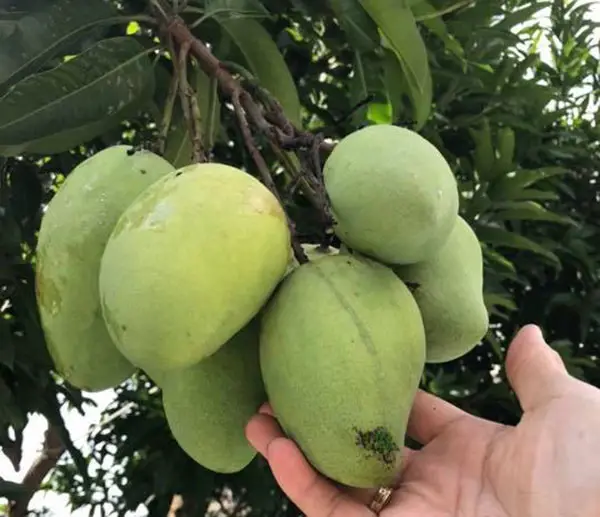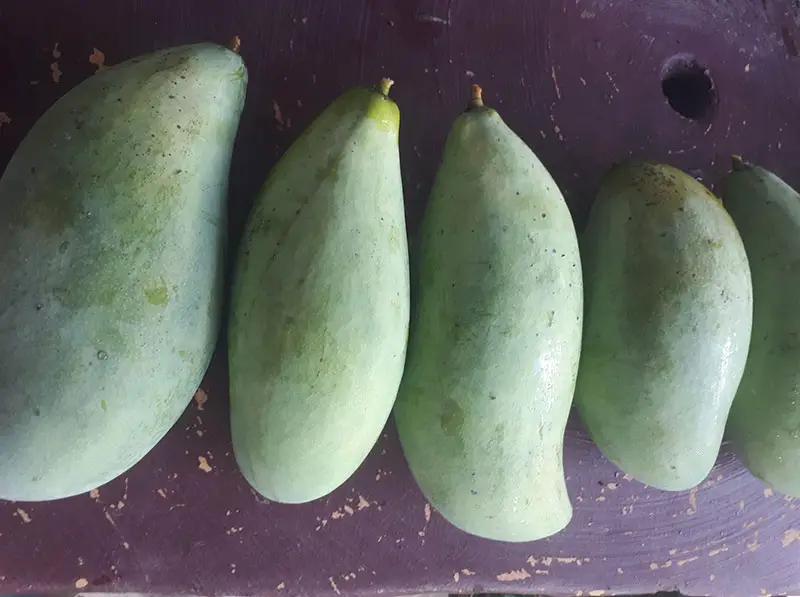Mango trees are a valuable commodity around the world. According to the UN Food and Agriculture Organization, mangoes are among the most widely cultivated fruits in tropical regions, with over twenty-five million tons of production per year. Growing your own mango tree from seed is an exciting prospect for any aspiring gardener.
We will try out best to provide our readers with clear instructions on how to grow their very own mango tree from seed, while also addressing some common mistakes that could be made along the way. From proper planting techniques to ideal growing conditions, this guide will ensure success in cultivating a fruitful crop of delicious mangos. With humor and enthusiasm, read on to discover all there is to know about growing a mango tree from seed.
Varieties Of Mango Trees
Mangoes are a popular tropical fruit grown in many parts of the world. There are hundreds of different varieties, all with unique characteristics and flavor profiles. While some species have been developed for specific growing conditions, others thrive in a variety of climates. When considering which type to grow from seed, it is important to know what climate you live in and how much space you have available for your tree.
Some mangoes can be small enough to fit into a pot on a patio or balcony while others may require more room for their root systems. Dwarf varieties like ‘Keitt’ and ‘Valencia Pride’ tend to stay under 10 feet tall, making them ideal choices for limited spaces. Look at the Kensington Pride or R2E2 types for larger yards and gardens that produce large fruits but remain relatively small trees when fully mature.
Another factor to consider when selecting a mango variety is taste preferences. Some people prefer sweet mangos while others enjoy tart flavors; there are also those who want varieties that offer both! If unsure what type you’d like try tasting samples from local markets or ask friends if they’ve tasted any good ones recently so you can get an idea before planting your own tree.
Obtaining A Seed
Obtaining a mango seed to grow is an important first step in the process. It can be done by eating ripe mangos or purchasing them from local stores, farmers’ markets, and nurseries. However, when selecting seeds for planting there are certain things that should be considered. The ideal candidate will have a plump shape with no cracks or blemishes on its surface. Additionally, it should also feel heavy for its size as this indicates that it contains more water content than other seeds.
Once the perfect seed has been chosen, it must then be carefully removed from the fruit using caution not to puncture or damage it while doing so. Once the removal is complete, any remaining flesh clinging to the outside of the seed should be gently wiped off with a damp cloth before proceeding to the next step of soaking and cleaning the seed.
Soaking And Cleaning The Seed
The first step in growing a mango tree from seed is to soak and clean the seed. This can be done by carefully removing any surrounding fruit pulp, then placing it into a bowl of water for 24 hours. After soaking, the husk should easily come off with gentle scrubbing using a soft brush or cloth.
It is important to note that not all seeds will germinate successfully no matter how well they are prepared; however, there are certain steps one can take to increase the likelihood of successful germination:
- Ensure non-damaged seeds are used: Choose quality seeds that look healthy and show signs of life such as slightly wrinkled ridges on their exterior.
- Remove any excess husks: Peel away any remaining pieces of husk which may contain bacteria or fungi. Once removed, rinse them under cold running water before planting.
- Keep moist during the process: Soaking helps keep moisture levels constant while cleaning soaks up some of the impurities present on the outside layer of the seed.
- Store in a cool location until ready to plant: Keeping them at room temperature will make sure they don’t dry out too quickly once planted in soil.
Soaking and cleaning seeds is an essential task if you want your mango tree to sprout healthily and grow vigorously – failure to do this could lead to unsuccessful germination rates or even the death of your newly forming sapling! With these simple tips in mind, prepare yourself for the next stage – preparing the soil!
Preparing The Soil
Mango trees are tropical plants and require well-draining soil that is rich in organic material. When preparing the ground for a mango seedling, it is important to mix compost or manure into the existing soil. This will help with water retention while also increasing nutrients available to the root system of the plant. The planting area should be located in full sun and if possible on an elevated location so that excess moisture can drain away from the tree’s roots.
When selecting soil for your new mango tree, look for a potting mix specifically designed for tropical fruit trees. If you have access to sandier soils like loam, those may provide better drainage than heavier clay soils which could become easily waterlogged.
Once selected, ensure that you prepare your soil adequately before adding any fertilizer or other amendments as this can cause harm to young seedlings due to their sensitive nature. With preparation complete, you are now ready to begin planting your mango seed!
Planting The Seed
Having prepared the soil, it is now time to plant the seed. But how does one go about planting a mango tree from seed? Here are some tips for planting your mango tree:
- Gently scrape off the soft husk of the seed with a knife or sandpaper until you can see its light brown color.
- Soak the seeds overnight in warm water before planting.
- Plant them directly into the moist, well-draining potting mix.
- Place the pots in an area that gets plenty of sunlight and warmth.
Once planted, lightly cover the surface of each pot with mulch to help maintain moisture levels in the soil and protect against weeds. Watering should be done regularly but not excessively as too much water will cause root rot. It may take up to two months for germination so patience is key.
As soon as new leaves appear, gently remove any weeds that have sprouted around the base of your plants. With proper care and maintenance, healthy roots should form shortly after germination has occurred.
Fertilizer Requirements
Mango trees require a specific fertilizer regime to remain healthy. For optimal growth, the tree should be fertilized every month during the growing season with a balanced blend of nitrogen, phosphorus, and potassium (N-P-K). Additionally, trace elements such as iron, zinc, and manganese can also be added to supplement deficiencies that may occur in certain soil types.
It is important not to overfertilize mangoes as it can lead to nutrient toxicity and even the death of the plant. A good rule of thumb is to apply only half the recommended amount on the package label. Furthermore, one should never mix different nutrients together but rather use separate applications for each element. This will allow better control of application rates and prevent any accidental overdose.
Organic fertilizers are often preferred by many gardeners since they provide slow-release nutrition which reduces leaching from soils. Examples include composted manure or blood meal which can supply essential macronutrients while promoting soil health through microbial activity.
Water Requirements
Water is the lifeblood of a mango tree, and understanding how much to give it can be tricky. It’s like Goldilocks: not too little or too much.
The key to successful watering is understanding your soil type. Sandy soils will require more frequent irrigations since they don’t hold onto moisture as long as clay-based soils do. To check if the soil needs water, place your finger in the top two inches of dirt. If it feels dry, then you should provide some irrigation. Before giving any water, make sure that the roots are well established so you don’t wash them away in heavy downpours; this usually takes about four weeks after planting.
Once your plant has matured, here are three ways to ensure proper hydration:
- Hand Watering: This method provides you with greater control over where and how much water is given at one time. Make sure that each area around the base receives an adequate amount by moving slowly from side to side while pouring out water.
- Hose Sprinkler: Using a hose sprinkler allows for even coverage across larger areas than hand watering does but requires less labor intensity due to its automated features. Set up a timer for when the sprinkler goes off for optimal convenience and efficiency.
- Drip Irrigation System: For those looking for something truly hands-off, installing a drip system is likely your best bet as it automatically waters plants without requiring constant monitoring or upkeep on your part once set up properly.
Understanding what kind of soil type you have along with utilizing these three methods while keeping an eye on weather conditions helps to ensure that your mango tree gets just enough H2O throughout its lifecycle.
Sunlight Requirements
Having discussed the necessary water requirements for growing a mango tree from seed, it is now essential to understand that sunlight is also an important factor. Sunlight not only provides the energy needed by plants for photosynthesis but also affects plant growth and development in other ways. The amount of light required varies with each species; however, mango trees generally require at least 6-8 hours of direct sunlight daily. Ideally, these should be full sun conditions without any shade during peak summer months.
When planting your mango tree outdoors, select a location that gets plenty of sun throughout the day and avoid areas where there are shadows or buildings blocking out the light. If you live in an area with long sunny days, you may need to provide some shading when temperatures reach their highest levels as too much heat can inhibit flower bud production and reduce fruit ripening ability. On the other hand, if you live in a cooler region with shorter days then more light will be beneficial to support proper fruiting season and flowering stages.
As far as indoor cultivation goes, supplemental lighting sources such as LED lights can be used to ensure your mango tree gets enough exposure to artificial photons. Positioning your tree near windows can help maximize natural light intake while adjustable shades or curtains offer additional protection against harmful UV rays on hot days. Ultimately, providing adequate amounts of both natural and artificial sunlight can significantly improve your chances of successfully growing a healthy mango tree from seed.
Pruning A Mango Tree
Pruning a mango tree is an important aspect of its maintenance and can help maintain its health. It is best to prune the tree in late winter or early spring when it is still dormant. Pruning should be done before the new growth appears as this will reduce any potential damage caused by pruning at other times.
When pruning, it is important to remove any dead branches first, followed by those which are crossing each other or too close together; these may cause overcrowding and restrict air circulation within the canopy. Any weakly attached limbs should also be removed. Removing diseased wood from the tree prevents disease spread; this should always be identified and cut away with sanitized tools for added safety.
Shape your mango tree’s canopy using thinning cuts that reduce excessive height or width without decreasing overall size significantly. This not only improves airflow but also allows sunlight to reach all parts of the tree more evenly. Severe pruning isn’t recommended so take care in trimming no more than 1/3 of live foliage per year to prevent shock and allow enough leaves for photosynthesis needs.
Preventing Insects And Pests
Mangoes are a delicious and nutritious fruit, popular in many cultures. Growing your own mango tree can be an enjoyable experience that yields delicious results – however, there is one major hurdle: insects and pests. Fortunately, by taking a few simple steps you can effectively prevent infestations from occurring or minimize damage if they do occur.
The first step in preventing insect and pest damage to your mango tree is monitoring the tree regularly for any signs of trouble. Look for holes in leaves or damaged branches which could indicate the presence of borers or caterpillars. In addition, inspect the bark of your mango tree for signs of sap-sucking insects such as aphids or scale. Any suspicious activity should be addressed immediately through appropriate treatments.
Another important factor in controlling insect and pest issues with your mango tree is proper fertilization and irrigation practices. Ensure that your soil has adequate nutrients so that your plant will have enough energy to defend itself against invaders. Additionally, avoid over-watering which can attract certain types of pests while also stressing out the roots of the tree.
Controlling Disease
Mango trees are susceptible to a variety of diseases, including anthracnose and powdery mildew. To prevent these types of fungal diseases, it is important to practice proper sanitation techniques in the garden. It is also important to keep the area around the tree free from weeds or other plants that could harbor pathogens. Prune the branches regularly in order to improve air circulation throughout the canopy and reduce humidity levels. Additionally, fungicides can be used as an extra precaution against fungi if necessary.
In addition to fungal infections, mango trees may suffer from bacterial blight which causes discoloration on leaves and defoliation during dry periods. Preventing this type of infection requires good irrigation practices such as ensuring even water distribution and avoiding overwatering. Applying copper-based fungicides at regular intervals will help control any existing bacteria while preventing further spread.
Pests should never be overlooked when caring for your mango tree. Regularly inspect for signs of infestation such as webbing or holes in leaves or fruit – vigilant monitoring helps ensure minimal damage caused by insects like aphids and mealybugs. The use of insecticidal soaps or horticultural oils can provide effective control without damaging beneficial insects or pollinators nearby. With proper care and attention, you’ll soon find yourself harvesting delicious mangos from your own healthy mango tree.
Harvesting Mangoes
Harvesting mangoes requires timing and patience. The process begins with the observation of fruit maturity, which is indicated by a change in color from green to yellow or red. Additionally, harvesting can be determined by squeezing and feeling for softness.
When ready to harvest, it is important to take into consideration potential weather conditions that may affect the crop such as wind and rain. While the mango tree’s branches may sway during storms or gusts of wind, they should not break due to their sturdy nature. Furthermore, caution needs to be taken when harvesting so that any rotten fruits are discarded before reaching storage containers.
Finally, there are several methods used for collecting mangoes:
- Handpicking: This involves plucking mature fruits off the tree one at a time using gloves if desired.
- For larger harvests, this method can involve ladders and long poles with bags attached for catching falling fruits.
- Smaller harvests require handpicking directly from the trees’ limbs without additional tools.
- Shaking: This requires shaking individual branches until ripe fruit falls on tarps placed beneath the tree canopy; however, care must be taken to avoid damaging either unripe or ripe fruits while harvesting them in this way.
With these considerations in mind, stored mangoes will remain fresh and delectable longer once harvested correctly.
Storing Mango Seeds For Later Use
Mangoes are a delicious and versatile fruit, with varieties originating from all over the world. After harvesting mangoes, it is possible to store their seeds for later use. This can be an effective way of propagating new trees without having to purchase saplings or rely on grafting techniques.
The best way to store mango seeds is in a cool and dry place. A plastic bag filled with sand can provide enough protection against moisture while still allowing some airflow. If stored properly, the seed should remain viable for up to two years. It is also important to keep the temperature consistent as fluctuations in humidity will decrease germination rates significantly. Additionally, it is advisable not to let the seed come into contact with direct sunlight as this can reduce its viability further still.
When ready to plant, it is essential that the seedling receive plenty of water and light for optimal growth. The soil should be well-drained yet moist; if necessary adding organic matter like compost or mulch can help achieve this balance more easily. Once planted, it may take several weeks before any sign of life appears – usually visible in the form of small sprouts emerging from the ground – but patience will pay off in due course.
Grafting Techniques For Faster Growth
Grafting is a popular technique used to speed up the growth of mango trees. This method involves attaching sections of one plant onto another in order to form a stronger and more vigorous tree. Grafting allows for faster fruit production, as well as improved quality and quantity compared to ungrafted varieties. It is important to note that grafting requires skill and expertise, so it should only be attempted by experienced gardeners or horticulturalists with access to appropriate tools and supplies.
The first step in successful grafting is selecting two different types of scion wood, which will become the new branches on the grafted tree. The scions should be healthy, disease-free, and about 6 inches long with at least three buds each. After making sure both plants are free from any pests or diseases, they must then be cut cleanly using sharp pruning shears before being attached together securely with tape or twine.
Next comes the most critical part: ensuring proper healing takes place between the two pieces of scion wood. While this process can take several weeks depending on temperature and humidity levels, monitoring progress regularly will help keep track of how quickly (or slowly) things are progressing towards success.
Proper aftercare – such as providing adequate nutrients and sunlight – should also be given throughout this period until full healing has been accomplished; otherwise, there could be a potential failure or damage down the line. With patience and care though, it is possible to successfully grow a strong mango tree through grafting techniques.
Container Gardening For Mango Trees
Container gardening for mango trees is an increasingly popular method of growing a variety of fruit tree species. It allows gardeners to have the convenience and flexibility of having their own mango tree in the comfort of their home or yard, without dealing with some of the challenges that may come with traditional planting methods. This article will discuss how to successfully grow a mango tree from seed while container gardening.
The first step when attempting to grow a mango tree using this method is finding the right kind of potting soil. Mango plants require well-drained soils that are low in fertility; therefore, it is important to avoid using commercial potting mixes as they often contain too much organic matter which can lead to root rot and other problems such as fungal diseases. Instead, opt for lighter sandy loam soils mixed with perlite or vermiculite for better aeration and drainage.
Once you’ve chosen your soil mix, make sure to use containers that offer adequate drainage holes at the bottom so excess water can escape easily. The size of your container depends on the type of mango you’re trying to grow but typically smaller varieties should be planted in containers between three and five gallons whereas larger varieties may need up to fifteen-gallon planters. Additionally, choose pots made from durable materials such as plastic or ceramic since these types tend to last longer than those made out of wood or metal due to moisture retention issues.
When considering what type of location is best suited for your potted mango plant, remember that it needs plenty of sunlight and warmth throughout most months–at least six hours per day is ideal–but try to keep temperatures above freezing during cooler months by bringing indoors if necessary. Additionally, ensure regular watering every two days (more often during hotter weather) but allow the top layer of soil to dry out before rewatering again as over-watering can cause root rot and kill off young plants quickly. With proper care and attention, your new potted mango tree should thrive!
Final Thought
Mango trees are a rewarding and beautiful addition to any garden. With the right instructions, anyone can learn how to grow a mango tree from seed. In doing so, one should consider the variety of mangoes available and obtain seeds that will thrive in their particular climate. The seed must then be soaked and cleaned before planting into soil that has been prepped for optimal growth. Harvesting mangoes is an exciting part of this process but it’s also important to store some of the seeds for future use or grafting techniques which provide faster results than growing from seed alone. Finally, container gardening could prove successful if outdoor space is limited.
For example, Paul recently decided he wanted to try his hand at cultivating a mango tree at home. He researched varieties suited to his region and obtained several seeds with great success rates. After soaking and cleaning them, he prepared the soil with compost and planted the seeds three inches deep. A few weeks later, Paul was delighted to find sprouts reaching up towards the sun—the beginning stages of his own personal mango orchard! Even though there was much work ahead as far as pruning and fertilizing were concerned, watching these little saplings take root gave Paul a real sense of accomplishment and pride in himself as a budding horticulturist.
In conclusion, learning how to grow a mango tree from seed is quite simple when following correct procedures such as obtaining viable seeds, preparing suitable soil conditions for planting, harvesting fruit once mature enough, storing viable seedlings for later use or propagation by means of grafting techniques, and even attempting container gardening in areas where outdoor space may be limited. As evidenced by Paul’s story above, anyone interested in experimenting with this tropical plant would do well to give it a try regardless of previous experience level; they just might surprise themselves with what they can accomplish!

